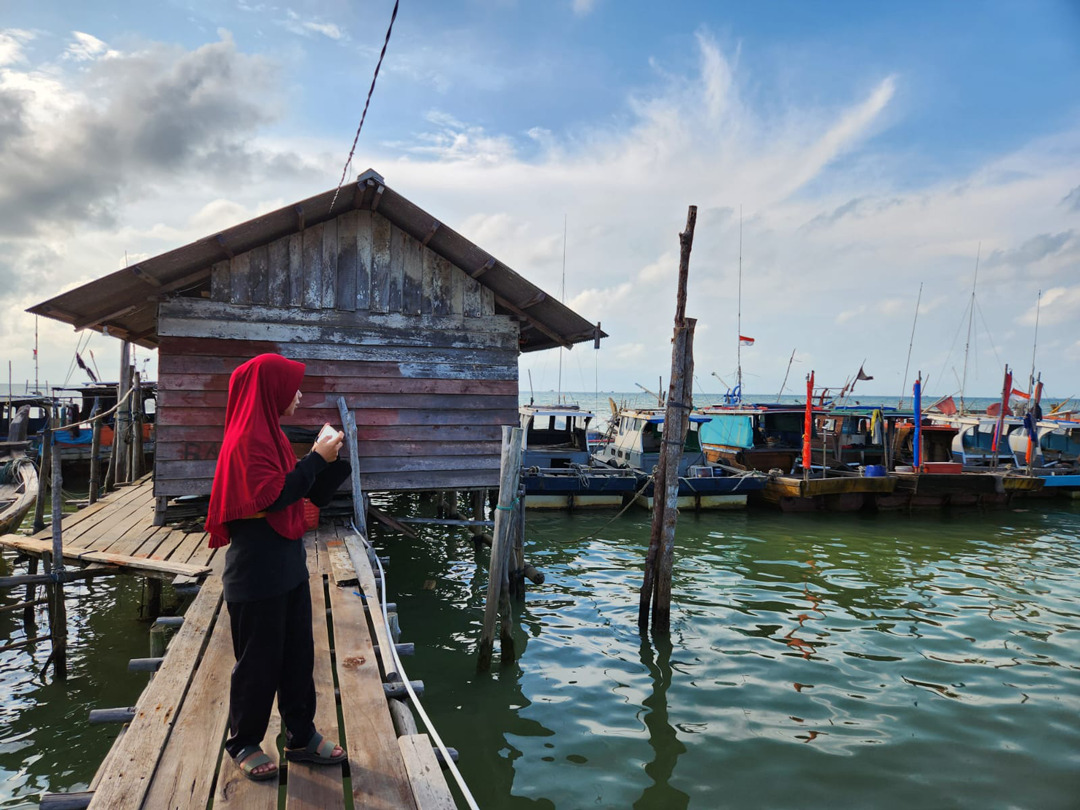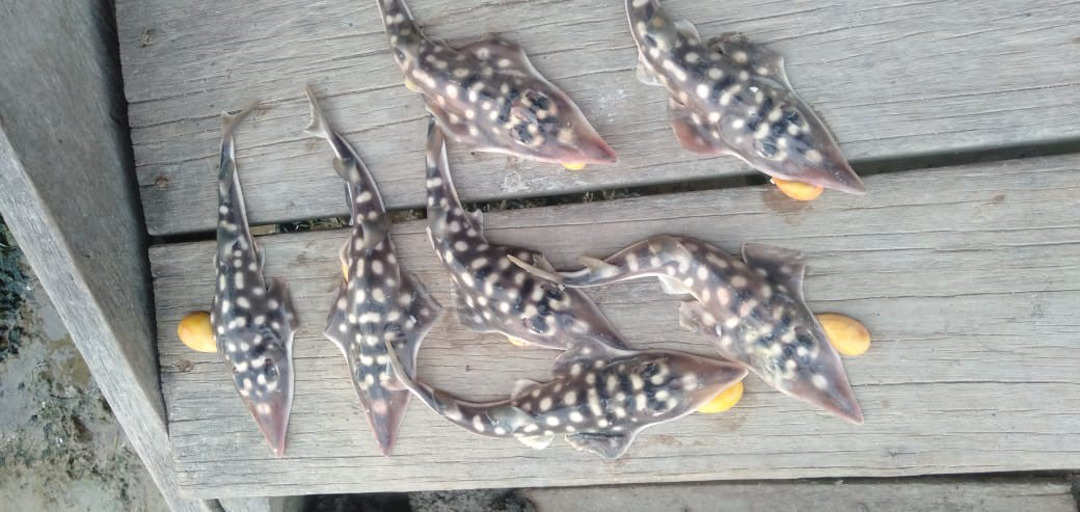Finding the lost wedgefish
For our SOSF Keystone project,ct The Clown Wedgefish: No laughing matter, we conducted a field trip to eastern Sumatera and the Riau Islands of Indonesia. These are the only known places where this Critically Endangered species have been found in the wild. The area is remote, with a lack of fisheries monitoring.
During the field trip, an intern student from the School of Makers SMX Bogor joined me. Few researchers or scientists visit these remote areas, and as two young women travelling with cool boxes and backpacks, we attracted a lot of attention from locals. Our novelty worked in our favour as we could engage and talk with locals. Far from the daily realities of remote coastal life, we faced challenges explaining why we do this research and even why women do field research and try to find a particular type of fish.

Scoping small scale fisheries at Dabo, Singkep Island. Photo © Benaya Simeon.
Firstly, we went to the Meranti District of eastern Sumatera, some 6 hours travel from the closest city. To reach the district, we needed to change between various boats, transporting our motorbikes across the water to access remote villages.
We were delighted to recorten10 individuals of the clown wedgefish caught by the set shrimp nets of artisanal fisheries. These were all juveniles and included some embryos from a pregnant female. This might help us point to potential nursery areas for the species. The good news is that this species is not yet gone from the area.
After eastern Sumatra, we moved to the Riau Islands. Fishers in this area predominantly fish using various small-scale fishing gear. Bigger wedgefish are caught in a targeted handline fishery, and small wedgefish are caught as by-catch. Recently, live individuals have started to be kept in seawater ponds and traded into the aquaria business.

Clown Wedgefish late-stage embryos from a pregnant female caught in artisanal fishery in eastern Sumatra. Photo © Zaidi.
During our visit to the Riau Islands, we did not locate any clown wedgefish. Based on interviews and discussions with the local people, we learnt that certain species were no longer as common as in the past. Local fishers mentioned, “In the past, we still could catch sawfish and baby hammerhead, juveniles of wedgefish were commonly seen swimming around the coastal waters, but now we do not find them anymore”. Through their local knowledge, fishers know that certain species may be close to local extinction.
They were also concerned about the impact of larger-scale commercial fisheries which operate in the waters surrounding the archipelago. These trawl and squid jigging fisheries originate from Northern Java. Local fishers and nomadic Indigenous groups (the latter called suku laut, the ‘marine tribe’) alike raised concerns given their dependence on marine resources.
These initial field visits were successful in locating clown wedgefish in Sumatra and setting up our next field trip to undertake environmental DNA sampling in mid-2023.
